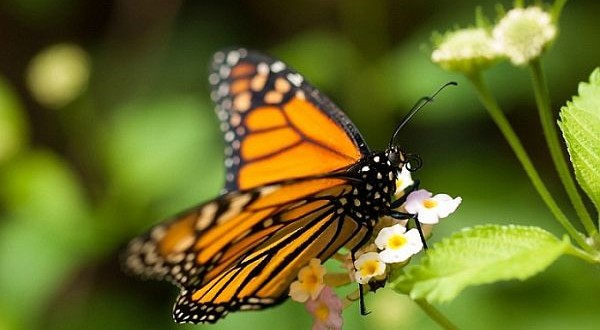Monarch butterfly numbers rebound, but still well below 20 years ago.
Despite reaching dangerously low numbers in the past, monarch butterfly populations are on their way to recovery as more and more of the orange and black insects have been spotted in recent months.
This is encouraging since monarch numbers have previously experienced a consistent and steady decline since the late 1990s when the introduction of genetically modified crops that are designed to withstand herbicides led to the elimination of milkweed, a native wildflower that is the sole food source for monarch caterpillars.
Experts have said that much of the increase in this year’s population had to do with favorable climate patterns along their migration route last year, but certainly part of the increase can also be attributed to the efforts of many people to plant additional milkweed habitat across the US including hundreds of NRDC members who have helped plant tens of thousands of milkweed plants along the migration route.
Much work remains to be done, however, as the monarch population still has a ways to go to achieve resilient and sustainable numbers. Today’s numbers are still well below the high count of over a billion less than 20 years ago. Currently, the population’s ability to continue to increase is limited by the amount of milkweed available on the landscape. We need to continue to scale back the use of pesticides that are eliminating milkweed. And we need to create more monarch habitat by developing and supporting largescale planting of milkweed and other nectar sources.
One of the many remarkable things about monarchs is that they have an incredible ability to bounce back with big numbers given the right set of circumstances. Today’s news provides a hopeful indication that we are helping them head in the right direction and curbing the loss of this magnificent butterfly. But we must be careful not to declare victory too soon. We still need to enact strong policies that will create the conditions needed to ensure that monarch butterfly numbers continue to increase long into the future.
(*The monarch butterfly population is measured in hectares. Authorities have previously used 50 as a multiplier to estimate numbers of butterflies in millions, but now use 37.5 as a multiplier to estimate the population in millions.)
Agencies/Canadajournal
 Canada Journal – News of the World Articles and videos to bring you the biggest Canadian news stories from across the country every day
Canada Journal – News of the World Articles and videos to bring you the biggest Canadian news stories from across the country every day



